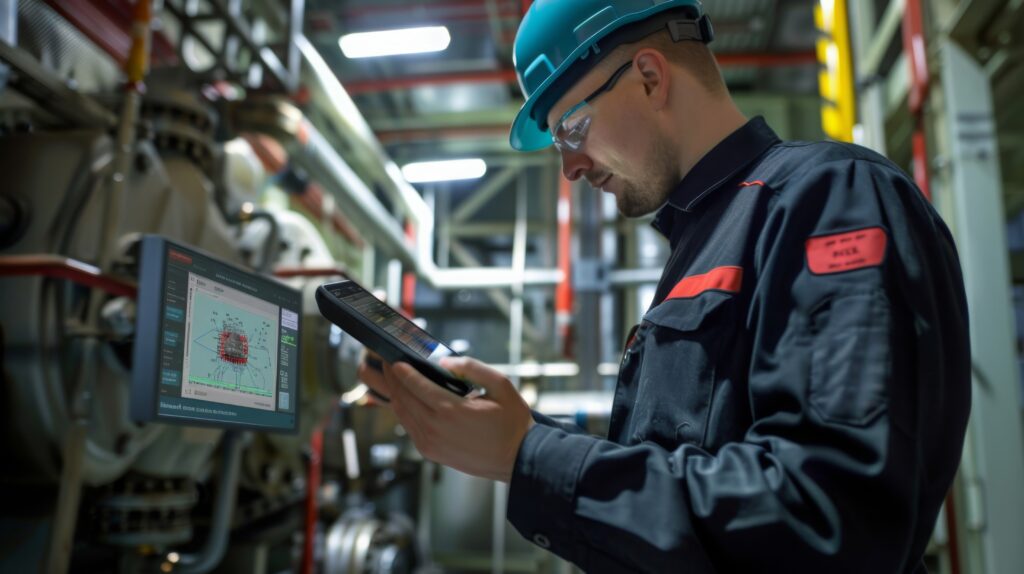- All Posts
- Smart Energy, Smarter Future: Unlocking Efficiency with AI Innovation
Smart Energy, Smarter Future: Unlocking Efficiency with AI Innovation
Authored by Scarlet Hao
AI-driven energy management is emerging as a transformative tool across residential, commercial, and industrial sectors. From predicting energy demands and optimizing resource allocation to reducing waste and lowering costs, artificial intelligence is empowering facility owners, managers, and homeowners to take control of their energy use like never before. As environmental and economic pressures intensify, AI offers a future-forward approach that not only meets today’s energy efficiency demands but also anticipates tomorrow’s challenges.
The Role of AI in Energy Efficiency
Artificial intelligence has the potential to fundamentally reshape how we think about energy consumption. Unlike traditional systems, AI-powered solutions leverage vast amounts of data from sensors, smart meters, and IoT devices to create a dynamic understanding of energy patterns. This data-driven insight enables systems to learn and adapt, automating complex processes and making real-time adjustments that maximize energy savings and agility. With AI’s ability to respond instantly to changes in energy demand or costs, businesses gain a strategic asset that keeps them competitive and cost-effective, even as energy prices fluctuate.
Whether it’s a smart thermostat adjusting to a routine, an AI-driven HVAC system optimizing temperatures in commercial spaces, or predictive maintenance alerts in an industrial plant, AI minimizes waste, reduces costs, and enhances efficiency. Moreover, AI provides clients with long-term predictability in energy costs. By forecasting demand and optimizing usage patterns, AI-driven solutions help clients budget more accurately, reducing financial uncertainty in a volatile energy market.
AI-Driven Strategies for Optimizing Energy Use
Demand Forecasting
One of the most powerful applications of AI in energy management is demand forecasting. Using historical data and advanced algorithms, AI can predict when and how much energy will be needed, allowing systems to adjust power allocation and minimize peak loads. For instance, AI can anticipate increased energy usage in a commercial building on hotter days, adjusting HVAC and lighting systems in advance to avoid energy spikes and reduce operational strain. This level of insight not only lowers costs but also enhances grid stability, reducing the risk of outages during high-demand periods.
Real-Time Monitoring and Optimization
AI enables real-time monitoring of energy consumption, detecting inefficiencies and suggesting corrective actions as they arise. In an industrial facility, for example, AI systems can continuously monitor machinery to identify anomalies in energy use. This immediate feedback allows facility managers to make timely adjustments, minimizing waste and enhancing efficiency. AI-driven optimization algorithms can also adjust systems such as lighting and HVAC to respond to real-time occupancy data, ensuring that energy is used only when and where it’s needed.
Predictive Maintenance for Enhanced Efficiency
Traditional maintenance schedules can be costly and inefficient, often resulting in unnecessary downtime or overlooked issues. AI changes this by enabling predictive maintenance, where systems monitor their own performance and alert operators when maintenance is truly required. For example, in a manufacturing facility, AI-driven sensors can detect early signs of wear in equipment, allowing technicians to address issues before they escalate. This not only improves energy efficiency by ensuring equipment operates optimally but also reduces repair costs and extends the lifespan of assets.

AI in Action: Real-World Applications of AI-Driven Energy Management
Commercial Buildings
In large commercial buildings, AI can manage complex systems to optimize energy use on a much larger scale. For example, AI-driven Building Management Systems (BMS) collect data from lighting, HVAC, and security systems to create a comprehensive view of energy usage. By analyzing occupancy patterns, these systems can make real-time adjustments that enhance energy efficiency and reduce costs. This approach not only benefits building owners but also creates a more comfortable and productive environment for occupants.
Industrial Facilities
AI-driven energy management has the potential to transform energy-intensive industries. From mining and manufacturing to logistics and data centers, AI systems monitor energy use at every step, identifying inefficiencies and optimizing processes. For example, AI can manage energy-intensive equipment in data centers, where minor adjustments to temperature and airflow can yield substantial energy savings. In industries where equipment downtime is costly, predictive maintenance systems alert operators to potential issues before they become major problems, improving both efficiency and productivity.
The Future of Energy Efficiency with AI
As the push for sustainability accelerates, the integration of AI in energy management will be essential for reaching ambitious energy reduction goals. For organizations, the promise of AI-driven energy efficiency goes beyond operational cost savings. It is a critical step in meeting regulatory requirements, reducing carbon footprints, and enhancing brand reputation in an increasingly eco-conscious marketplace.
At Viridis Initiative, we believe AI-driven energy management is more than a technology trend—it’s a vital tool for achieving the resilient, sustainable, and efficient energy future we envision. We understand the complexities of integrating AI into energy systems and are committed to helping clients leverage these solutions to reduce costs, increase resilience, and support their sustainability goals. By taking a proactive approach, we empower our clients to not only meet today’s energy needs but to anticipate and adapt to the evolving demands of tomorrow.
Whether you’re a homeowner looking to make your property more sustainable, a building manager focused on cutting costs, or an industrial leader seeking to improve operational efficiency, AI-driven energy management offers a pathway to long-term success. We invite you to explore how Viridis Initiative can support your journey toward a smarter, more sustainable energy future—because the power to change is within reach, and the technology to make it happen is here. Let’s embrace the possibilities of AI-driven energy efficiency and build a future that’s efficient, resilient, and ready for what comes next.